@JamesGoldberg Twitter thread, continued from here.
Coming back to this thread this morning. The topic (for those of you just joining us) is Mormon Lit recommendations. But first: a digression! Why am I still talking about Mormon Lit when President Nelson has emphasized using the full name of the Church of Jesus Christ of Latter-day Saints?
Shouldn’t I be talking about Latter-day Saint literature? Or Literature of the People of the the Church of Jesus Christ of Latter-day Saints? Or the Tabernacle Literature at Temple Square?
Maybe. I’m sympathetic to concerns about people using “Mormon Church” when that’s not the Church’s name. And I like the Church’s crazy-long name, which for all its high character count, does a really concise job of making some core theological claims.
Trying to avoid all uses of the word Mormon to achieve that end feels a little bit like the time we got mice in our basement and my wife asked what I thought we should do about it and I suggested nuclear weapons. But hey, people who live in glass houses shouldn’t throw stones.
That said, I don’t know if I can make it in the Church of Jesus Christ of Latter-day Saints without also being a Mormon a lot of the time.
The Church’s full name carries a certain weight . That can be beautiful, but it can also feel stiff. It’s like formal clothing: dressing a certain way for certain occasions can set them apart, but dressing up all the time would be exhausting for many of us.
Mormon, for me, is like wearing jeans. It’s familiar. It’s sturdy. I’m not ready to put that in the closet forever.
As a teenager, I needed it. People had different values and norms than I did. I needed I quick, accessible way to explain that.
“I can’t; I’m Mormon,” works for that. “I cannot, for I am a member of the Church of Jesus Christ of Latter-day Saints” would not have worked for me.
I also like Mormonism.
I’ve been thinking lately there’s a distinction for me between the gospel of Jesus Christ–which is made of divine truth I try to grasp in my slippery mortal hands–and Mormonism, which is just a big pile of everything people in my tradition have said, imagined, speculated, done.
I love Mormonism as an imaginationscape. I know it’s not all pure divine truth, but playing in Mormon ideas and imagery has let me fall into the divine again and again.
So today I’m going to recommend some very Mormon books. Maybe they’ll also speak to people who see themselves primarily as members of the Church of Jesus Christ of Latter-day Saints. Maybe they’re more for wandering mystics who fell in love with Mormonism like me. Come, friends, and see.
The first is the Garden of Enid by @ScottHales80. I watched it unfold on Tumblr. You can read it as two books now in print: https://gregkofford.com/collections/scott-hales/products/the-garden-of-enid-1…
https://gregkofford.com/collections/scott-hales/products/the-garden-of-enid-2…
 The subtitle, “Adventures of a Weird Mormon Girl,” pretty much sums up the book. Enid is weird and Mormon. Weirdly Mormon. Mormonly weird.
The subtitle, “Adventures of a Weird Mormon Girl,” pretty much sums up the book. Enid is weird and Mormon. Weirdly Mormon. Mormonly weird.
She lives both in the embrace and in tension with her community. And not necessarily in the ways people talk about when they’re trying to sound sophisticated.
Enid’s most important relationships with other Mormons: her mom and ward members. But she doesn’t know how to perform idealized Mormonness. Some people may not be inclined to do so. Enid does not seem capable.
 And she improvises. It’s like she’s walking this tightrope where alienation and despair are always around her. And she gets them, they feel familiar and real and maybe even comfortable, but she’s not willing to go there yet. She’s going to walk this narrow path through the air.
And she improvises. It’s like she’s walking this tightrope where alienation and despair are always around her. And she gets them, they feel familiar and real and maybe even comfortable, but she’s not willing to go there yet. She’s going to walk this narrow path through the air.
She’s developed this quirky, sometimes dark, sense of humor. She’s drawn toward the people around her but also constantly marks her distance from them. Is she trying to guard herself? Is she trying to guard them?
Her safest friends are dead people. She talks with Joseph Smith, Eliza R. Snow. With the snarky Egyptian mummy who waited for Osiris until he wound up in Kirtland.
She finds solace in the Mormon imagination, envisioning herself zipping through space as an unorganized intelligence. Wondered if an embodied God lies awake at night thinking of us.
And slowly, misstep by step, crisis to crisis, she creeps closer to the people around her.
And it’s in that frightened, tentative openness toward others that the gospel of Jesus Christ hits her. Scott never calls it out. Never lets you feel like a lesson is descending. But charity and grace rise like a tide and carry Enid and you.
I love these books intellectually, emotionally, spiritually. The technique is really interesting, too. I don’t know anyone else in Mormon comics who’s played with frame lines in quite the way Scott sometimes does.
Whatever alchemy of craft and philosophy and heart was involved, Enid delivers. People who didn’t check the about tab on the page used to write her emails, offer encouragement, a listening ear. She felt that real.
At the same time, no one else has been as funny sorting through the inside baseball of obscure Mormon history.
Oh, man. I got to work soon. But let me tell you also about Steven Peck (@SciHoroscope).
 If you haven’t read any of Steve’s stuff, I’d recommend starting with A Short Stay in Hell. It’s mindbending and terrifying and I love it.
If you haven’t read any of Steve’s stuff, I’d recommend starting with A Short Stay in Hell. It’s mindbending and terrifying and I love it.
BUT it’s not today’s recommendation because it’s not that Mormon. It’s a book about quantifying the near infinite. Peck could have used a protagonist from another faith and the book would have worked like 97% as well.
No, the book I’m putting on my Mormon Lit list is Wandering Realities, his short story collection.
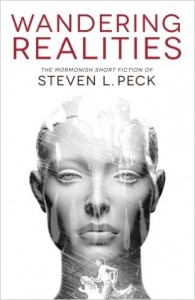 Do not start with the first story in this book. Do not start with the last story. They represent the edges of his rhetorical range, and I want you to start in the middle. Start wherever you feel like in the middle.
Do not start with the first story in this book. Do not start with the last story. They represent the edges of his rhetorical range, and I want you to start in the middle. Start wherever you feel like in the middle.
Oh, wait! Just checked the table of contents and I lied. It’s the second story and the second to last story (“Let The Mountain Tremble, for Adoniha Has Fallen” and “The Gift of the Kings Jeweler”) that are the rhetorical edges.
The first story, “Avek, Who Is Distributed” works great as a starting point. It’s about a distributed artificial intelligence who wants to be baptized but doesn’t have a body.
You might also start with a story like “The Captain Makes a Friend on the Day His Cravings and Listings Disappear,” about what temple work looks like to a pirate in the spirit world. Or “When the Bishop Started Killing Dogs,” which is about service.
There are stories here about time travel, and a zombie apocalypse, and a schism between the Churches on earth and Mars, about the origin of Liahona, and the pinewood derby. As the sages say about the Talmud, “turn it and turn it for everything is in it.”
The tone and style are unpretentious and unassuming. They openly acknowledge they’re made up, assembled like junk art out of the available floating salvage of our culture. But they get at the lived experience of religion in ways that are engaging and sometimes profound.
The Garden of Enid and Wandering Realities are very *Mormon* Literature. When suits itch and bind, Steve and Scott give us blue jeans. Religion you can put on, wear to a movie. It’s also religion you can count on when you feel like you’re walking a tightrope.
I’m a member of the Church of Jesus Christ of Latter-day Saints, tied to it by covenant in both its aspirational and actual forms. That can be exhilarating. That can be exhausting.
I rely on the vast storehouse of Mormonism to make it through when I need to take a deep breath of fresh insight. And I’m grateful for distinctly Mormon literature that shakes, stirs, and remixes elements of that storehouse to help me drink wisdom and grace.
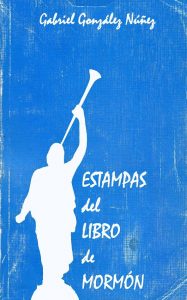 Gabriel González Núñez is a writer whose work helps the faith feel out of its apparent time. If you read Spanish or can get someone to help you with it, I highly recommend his Estampas del Libro de Mormón.
Gabriel González Núñez is a writer whose work helps the faith feel out of its apparent time. If you read Spanish or can get someone to help you with it, I highly recommend his Estampas del Libro de Mormón.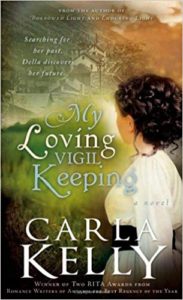 It’s set at the turn of the century (literally–pretty sure it starts in 1899 and the climax is definitely in 1900), with scenes in Salt Lake and Provo, but the bulk of the action in the mining town of Scofield, Utah.
It’s set at the turn of the century (literally–pretty sure it starts in 1899 and the climax is definitely in 1900), with scenes in Salt Lake and Provo, but the bulk of the action in the mining town of Scofield, Utah.The romance genre it fits into is one of the few genres where there’s a solid Mormon market. The reliability of that audience means that Kelly can create a narrative where faith suffuses the background without the book being about faith.
The book, like much of the romance genre, is about finding yourself and your place in the world. As a mixed race kid, I really enjoyed reading about a girl who is half-Greek at a time when that’s wildly exotic finding her place in a multicultural immigrant Mormonism.
OK. Rapid fire now. I like Merrijane Rice’s Messages on the Water.
 She’s been a frequent Mormon Lit Blitz finalist and deals with the everyday demands of discipleship in a lot of her poetry. There are turns at the end of these poems that knock you out of the everyday and toward some kind of other level of experience. Great stuff.
She’s been a frequent Mormon Lit Blitz finalist and deals with the everyday demands of discipleship in a lot of her poetry. There are turns at the end of these poems that knock you out of the everyday and toward some kind of other level of experience. Great stuff.

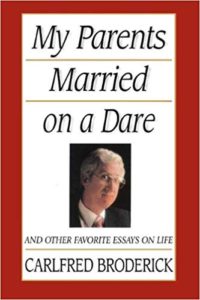

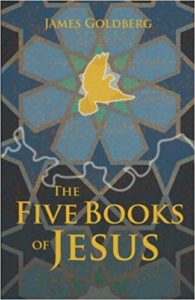
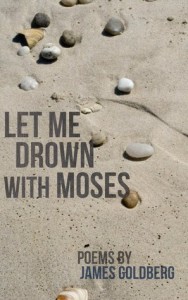
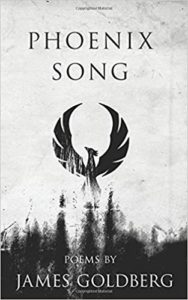
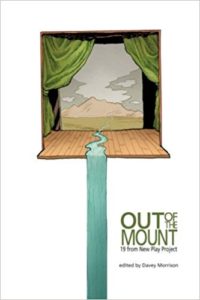
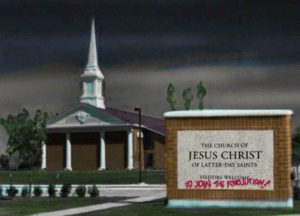
One thought